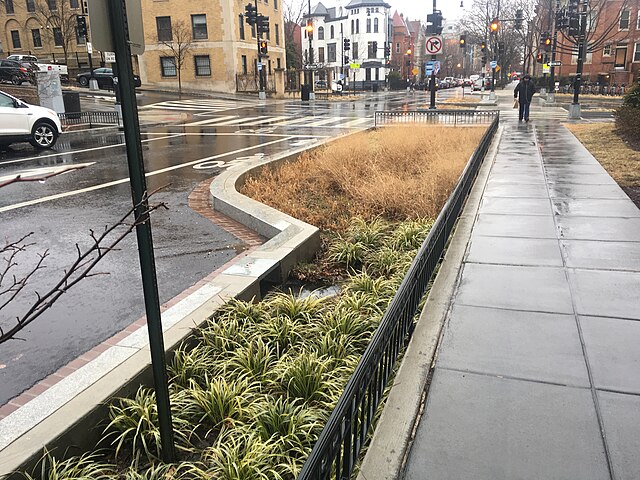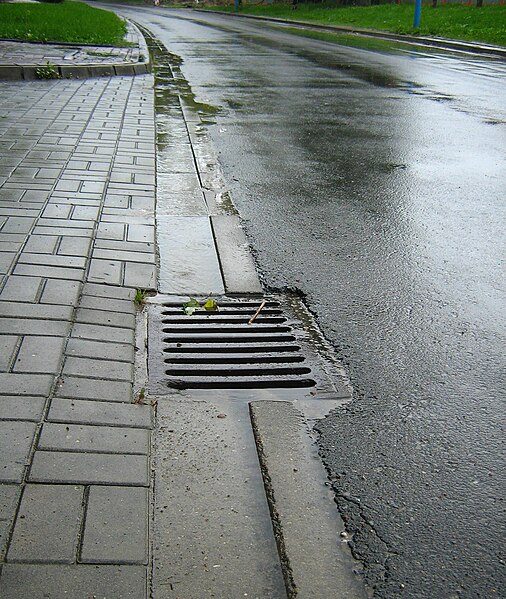Sustainable drainage system
Sustainable drainage systems are a collection of water management practices that aim to align modern drainage systems with natural water processes and are part of a larger green infrastructure strategy. SuDS efforts make urban drainage systems more compatible with components of the natural water cycle such as storm surge overflows, soil percolation, and bio-filtration. These efforts hope to mitigate the effect human development has had or may have on the natural water cycle, particularly surface runoff and water pollution trends.
Retention ponds such as this one in Dunfermline, Scotland, are considered components of a sustainable drainage system.
Bazzalgette combined sewer system being built in 1860, London
Roadside bioswale designed to filter storm water runoff from street surfaces
Runoff from the vicinity flows into an adjacent bioswale
A storm drain, storm sewer, surface water drain/sewer, or stormwater drain is infrastructure designed to drain excess rain and ground water from impervious surfaces such as paved streets, car parks, parking lots, footpaths, sidewalks, and roofs. Storm drains vary in design from small residential dry wells to large municipal systems.
Storm drain grate on a street in Warsaw, Poland
Storm drain with its pipe visible beneath it due to construction work
American-style curbside storm drain receiving urban runoff
Full view of a storm drain (Ontario, Canada)








